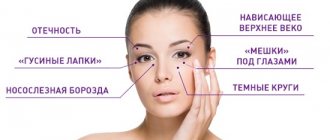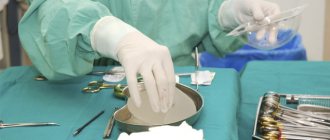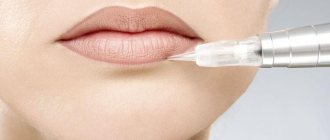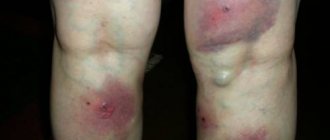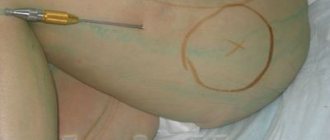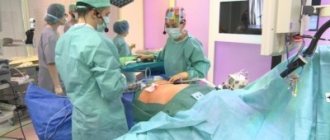In the hands of an experienced surgeon, you can acquire a clear oval face, tighten your eyebrows and forehead, perform blepharoplasty of the upper and lower eyelids, plastic surgery of the chin and nose. More and more new techniques are appearing, this branch of the aesthetic industry is developing dynamically throughout the world and in our country in particular.
The most important question remains about choosing a surgeon. Here experts recommend being guided not by the big name of the clinic, but, above all, by the reputation of the specialist. In other words, you need to choose good hands. Fortunately, information about specialized specialists is easy to find on the Internet - patients who have undergone plastic surgery often share their impressions and even publish photographs in the “before and after” format. One of the basic rules here is to look for a surgeon who has specialized in a particular type of surgery for many years, be it blepharoplasty or endoscopic lifting .
It is important to accept the fact that plastic surgery is often the only solution to the problem. And at the same time, we must realize that even minimal surgical intervention becomes a serious introduction into the body. Therefore, operations require a thoughtful approach, careful preparation and, of course, sufficient time for rehabilitation. No matter what kind of surgery is involved, smokers will have to give up cigarettes at least two months before it, because smoking before some operations can cause tissue necrosis. Also, two weeks before the planned operation, you should not take aspirin and other medications that affect blood clotting.
What it is
Circular blepharoplasty, or eyelid lift, is a radical but effective method to correct existing (even serious) problems in the eye area. This is a surgical procedure and is therefore performed exclusively by professionals in an outpatient, sterile environment. Performing eyelid surgery at home, as well as without a document of completed training and professional skills, is unacceptable.
A circular eyelid lift is considered a complex and responsible procedure. It involves combining two procedures (blepharoplasty of the upper and lower eyelids) into one, as a result, the doctor is faced with the task of correcting all the deficiencies of the periorbital area. The duration of surgery can take up to 3 hours.
Indications for use
A circular eyelid lift is performed to rejuvenate the face, as well as correct congenital (acquired) pathology. Experts recommend using it to eliminate:
- drooping corners of the eyes;
- manifestations of soft tissue ptosis;
- deep wrinkles, pronounced folds around the eyes;
- sagging, heaviness of the upper eyelid, “tired eye” syndrome;
- pathologies, defects and asymmetry of the periorbital region requiring correction;
- bags, swelling and dark circles under the eyes;
- sagging skin of the lower eyelid;
- fatty hernias of the eyelids.
An indication for a circular eyelid lift may be the desire to look younger with pronounced age-related skin changes.
Cosmetologists recommend performing such blepharoplasty after 35 years, if there are no serious prerequisites for its earlier implementation. The operation, the elimination of eyelid defects that reveal the patient’s age, is performed in one session.
Circular blepharoplasty provides a noticeable rejuvenating effect, the patient “resets” at least 5 years. The result lasts up to 15 years, then, at the client’s request, the procedure is repeated.
Laser blepharoplasty of the lower eyelids
My tendency is to remove lower eyelid hernias using a transconjunctival incision and retroseptal dissection, which minimizes the potential complications caused by the open technique, such as postoperative lower eyelid ectropion, strip of sclera, and often a visible scar. .
In addition, when performing a transconjunctival approach, the rounding of the eye, which sometimes occurs after an external incision in the skin of the lower eyelid, is avoided.
In addition, patients are pleased if in the postoperative period there is only one scar that is not visible at all.
The problem of sagging skin of the lower eyelid is adequately solved using two simple maneuvers:
- performing laser resurfacing of the skin of the periorbital area
- "pinch" skin resection
Transconjunctival laser blepharoplasty via a retroseptal approach increased patient satisfaction and excessively reduced potential complications after lower blepharoplasty.
Therefore, the main and most important innovation between the past and the present in the field of blepharoplasty is the introduction of the transconjunctival approach and the use of laser for this procedure. Additionally, the addition of the two previously mentioned maneuvers makes the transconjunctival approach more popular and effective.
In cases where an open technique is required, such as in patients with excessive laxity of the skin of the lower eyelid and other severe signs of aging, the laser again plays an active role in the procedure.
The laser creates a very effective and longer-lasting contraction of the eyelid skin, which improves the final result.
The price of laser blepharoplasty is no different from scalpel blepharoplasty.
Preparation for the event
To minimize the risks of complications, speed up the recovery process after surgery and achieve maximum anti-aging effect, it is worth preparing well for the procedure. Organizational aspects:
- Carefully study real patient reviews of plastic surgery clinics, doctors and staff. Remember, your health and appearance depend on the professionalism of the doctor.
- Visit an experienced cosmetologist or plastic surgeon. During the consultation, he will assess the condition of the skin, discuss the conditions for the procedure, and its stages.
- Be sure to consult an ophthalmologist. The chosen method of rejuvenation should not contradict its conclusions.
- After the consultation, you need to undergo an examination and take some tests. As a rule, this is a general blood test, urine test, a test for blood clotting and the patient’s absence of pathogens of syphilis, hepatitis, as well as a test for AIDS and HIV. Additionally, you will need to do fluorography, a cardiogram of the heart, and examine the organs of the chest cavity.
- Circumferential blepharoplasty is performed under general anesthesia. The patient should have no contraindications to the chosen method of pain relief.
- At the follow-up consultation, the attending physician will summarize the results of the tests and examinations performed, and set the date for the operation.
Lifestyle adjustments will also be required:
- 1-2 weeks before the procedure, forget about alcohol and smoking.
- Do not take medications that affect the blood clotting mechanism several days before your scheduled surgery.
- You should not eat 8 hours before surgery, and drink liquids at least 5-6 hours before it.
- Please note that any damage to the skin in the periorbital area, severe tanning, and tissue that has not yet been restored after chemical peeling and other cosmetic procedures will be an obstacle to the operation.
Attention! After the operation, it will be difficult for you to move independently, so arrange for help from friends and family in advance, and take 2–3 weeks of vacation.
Types of correction
A circumferential eyelid lift combines upper and lower eyelid blepharoplasty techniques.
The lower eyelid blepharoplasty technique involves eliminating sagging skin of the lower eyelid, cutting off excess tissue and fat deposits.
Upper eyelid blepharoplasty allows you to correct defects of the upper eyelid. The incision is made along the natural fold.
Transconjunctival blepharoplasty can also be used. In this case, excess accumulated fatty deposits are removed through incisions in the conjunctiva, which covers the inner surface of the eyelid and forms the arches.
A scalpel or laser beam is used to make cuts. Laser treatment is more expensive, but the cut is extremely thin and “jewel-like.” The laser also partially cauterizes the eyelid tissue, reducing the risk of infection.
Types of circular blepharoplasty
Today, doctors use two types of blepharoplasty: laser and traditional. With laser circumferential blepharoplasty, no incisions are made. Correction is carried out by puncturing the conjunctiva with a laser beam while simultaneously removing fat deposits.
A few hours after the procedure, the patient can safely go home. The recovery period is also significantly reduced, because after laser exposure there are no bruises, swelling or scars left on the face.
The traditional method involves making abdominal incisions in the eyelids, through which fat deposits are excised. Stretched areas of skin are cut off, the remaining tissues are tightened and fixed in special anchor areas, which are located in the eye area.
How is the operation performed?
The duration of the operation is 1–3 hours. Entrust it to first-class specialists in a specialized plastic surgery clinic. It is in your interests to first inquire about the doctor’s permission to perform this type of procedure, in compliance with the requirements of sanitary and hygienic standards.
Surgery is performed only under general anesthesia. Depending on the patient's health, intravenous sedation or general anesthesia is used.
Circular blepharoplasty involves the following sequence of actions:
- An anesthesiologist performs anesthesia.
- Particles of dust and sweat are removed from the surface of the face and disinfected with an antiseptic to minimize the risk of infection in the wound.
- To make it easier, the doctor uses a special marker to mark the areas that need correction.
- A plastic surgeon is working on the imperfections of one eyelid. He makes a neat cut along the natural fold, removes excess skin and fat, evenly distributes fat deposits, followed by fixation. Then he fixes the tissues in a new, tightened position, and performs a cosmetic suture using self-absorbing threads.
- The doctor works on the second eyelid in the same way.
- When the operation is completed, a fixing patch is glued to the eyelids and a sterile bandage is applied. The patient is allowed to rest.
After the operation, the patient remains in the ward from several hours to 3 days (at the doctor’s discretion) under the supervision of clinic staff.
Recovery period
Circular blepharoplasty requires attention and special care from the patient in the postoperative period. On average, the healing process (rehabilitation) lasts 2–3 weeks.
Let's consider the condition of the area around the eyes after the procedure by day:
- In the first hours after surgery, the patient must be under the supervision of a doctor. To prevent severe swelling and hematomas, dry ice and cold compresses are applied to the operated area.
- Days 1–3 - the patient feels pain in the incision area, swelling and hematomas appear. To prevent complications of the patient’s condition, the development of inflammatory processes in damaged tissues, the doctor prescribes antibiotics, medicinal eye drops, and painkillers to relieve pain.
- Day 2 - the patient is recommended to begin performing special exercises (gymnastics) for the eyes. This will speed up the restoration of the integrity of the skin and prevent complications.
- 4-5 days - the skin condition improves, the doctor removes the stitches.
- 10–12 days - postoperative bruises disappear, but hematomas can remain for up to 20 days.
- Complete elimination of traces of the operation should be expected in 2–6 months. This indicator is individual, depending on the characteristics of the skin and the age of the patient, the speed of its recovery.
For a speedy recovery, it is important to follow all the recommendations of your doctor and the rules for further facial care:
- Avoid physical activity, postpone sports and any activities that may cause increased body temperature and profuse sweating. Do not visit the bathhouse, sauna, or take hot baths. With sweat, an infection enters the wound (incision), which causes the development of an inflammatory process and leads to complications.
- Sleep only on your back with your head raised up until the swelling goes away and the integrity of the skin is restored. Leaning forward should also be avoided.
- Maintain a gentle regime for your eyes, do not overstrain them by watching TV for a long time, working on the computer, reading books and the press. After the operation, vision may deteriorate, but do not worry, it will recover over time.
- Decorative cosmetics are prohibited for at least 10 days. If possible, avoid using it until the skin is completely restored and the wounds are healed.
- When going outside, don't forget about sunglasses.
- For the first 5-7 days, wash your face with extreme caution, without touching the previously operated area. Once again, do not touch the operated skin with your hands. To treat it, use medications prescribed by your doctor.
- From the second day you need to do eye exercises. Such training will ensure rapid restoration of damaged tissues, restoring their firmness and elasticity.
- To quickly eliminate swelling in the eye area and stimulate skin regeneration, cosmetologists recommend using lymphatic drainage massage. But trust its implementation to professionals; independent exposure will cause significant harm.
- Mild peelings, cosmetic procedures for moisturizing and lifting the skin can be resorted to after the incisions have healed. They will ensure rapid restoration of the skin, the removal of postoperative scars and redness.
- Smoking and alcohol are prohibited for the entire rehabilitation period.
- Do not wear contact lenses for at least the first 2 weeks without consulting your doctor and ophthalmologist.
You can enjoy the effect of the operation after 2–3 months; less often, traces of the effect are visible for six months.
Important! Repeated blepharoplasty is performed in cases of extreme necessity, for medical reasons. The results of a circular eyelid lift last up to 15 years.
Rhinoplasty
The purpose of this popular and complex operation is to improve the proportions of the nose. Rhinoplasty can be complete or partial. Often it is only necessary to correct the shape of the tip of the nose, remove the hump, and adjust the wings of the nose. But often patients ask to narrow and reduce the weight of the entire nose. During rhinoplasty, the surgeon often straightens the nasal septum, which makes breathing difficult. This type of surgery is called septoplasty.
Recently, the closed rhinoplasty technique has been mainly used, when incisions are made inside the nostrils. In this case, no traces of the operation remain on the outside. In rare cases, with significant deformation of the nose, installation of implants or open rhinoplasty is indicated. In the latter case, the incisions are made under the nose, and the thin scar becomes almost invisible over time. This technique is used if the best access to the osteochondral part of the nose is required.
When working on the bridge of the nose, narrowing it or eliminating a hump, the doctor either performs an osteotomy, that is, breaking the bone, or resorts to grinding. Since plastic surgery is performed under general anesthesia, there is no need to be afraid of osteotomy.
The operation usually takes about one and a half hours. Swelling of the soft tissues of the nose may persist for up to four months after surgery. For the first two weeks after rhinoplasty, you will need to wear a plaster cast to support the shape of the nose and protect the soft tissues. The final result is assessed only after 8-12 months. This is how long the processes of formation and restructuring of all nasal tissues take.
You cannot wear glasses for two months after rhinoplasty. Therefore, those who suffer from bright sun rays in the summer should not undergo surgery during the hot season. It remains to be said that experts do not recommend rhinoplasty before 18 and after 40 years of age.
Prices for rhinoplasty start from 90 thousand rubles.
Price
Many professional centers and plastic surgery clinics offer circular blepharoplasty; your task is to choose the best one. To do this, trust patient reviews, read the doctor’s qualifications and documentation of his professional skills.
How much does the procedure cost? Expect that an upper and lower eyelid lift in Moscow will cost 50,000 rubles and more. The average cost of the operation is 78–120 thousand rubles.
Excellent reviews of the procedure were received by the aesthetic medicine center Seline Clinic, multidisciplinary medical, therapeutic and diagnostic, “Sm-Clinic” and others.
The cost of blepharoplasty is influenced by a number of factors:
- the age of the patient and the complexity of the problem;
- status of the clinic and qualifications of the doctor;
- location of the clinic;
- length of hospital stay after surgery.
Note! The final result and the risk of complications largely depend on the choice of the doctor and his professionalism, so approach this issue with maximum demands and scrupulousness. Savings are inappropriate here; cheap options often promise large expenses for postoperative correction and restorative procedures.
Mentoplasty
This plastic surgery corrects various chin defects. Frequent complaints from patients include a double chin, too small or large, a sloping chin or its irregular shape. Mentoplasty is divided into augmentation and reduction.
To enlarge the chin, the lower jaw is advanced or an implant is installed. During endoprosthetics, the incision lies either on the inside of the lip or on the outside, along the line of the chin fold. Plastic surgery does not take more than half an hour. When reducing the chin, the surgeon removes excess bone and cartilage through the same incisions. The operation also lasts about half an hour, a maximum of an hour. Typically such operations are performed under local anesthesia. General anesthesia is required only for advanced operations. You will have to stay in the hospital for no more than two to three hours, and the swelling of the chin will last about ten days, during which you must abstain from hard foods. The result of the operation can be assessed after three months.
The cost of plastic surgery starts from 55 thousand rubles. The implant costs from 200 to 400 euros.
What is prohibited to do after the procedure
Those who are considering a circular eyelid lift should take into account that after the procedure, their lifestyle will change for some time. Be prepared for the following restrictions for the next 2-6 months:
- Bad habits are unacceptable until the skin in the area of surgery is completely restored. This is especially true for smoking and drinking alcohol.
- Sauna, steam bath, solarium, sun tanning, swimming pool, and hot baths are also prohibited.
- Sports, heavy physical activity, including visual fatigue, can harm health and delay the rehabilitation process.
- During the first 2 weeks, bruises and swelling under the eyes significantly spoil your appearance, so visiting crowded places or going to work will not be possible. Take this fact into account when planning the procedure, take a vacation.
- Sleeping on your stomach, side, or bending forward is strictly prohibited. They can provoke increased swelling, prolonged and extensive hematomas, as well as other complications.
How to shorten rehabilitation?
After blepharoplasty, you will need to constantly visit your doctor as questions arise, and simply to monitor the recovery process.
Basic recommendations during the rehabilitation period:
- treatment of sutures before removing the bandage;
- use of antiseptic eye drops;
- the use of special drugs for increased swelling (Lioton, Lokoid), the use of herbal compresses (sage, chamomile, linden).
- eye protection from overexertion and sun rays
In the absence of contraindications, the doctor may prescribe special exercises for the eyes. Such gymnastics will speed up recovery, normalize muscle tone, and improve blood circulation. It consists of just a few exercises and does not take much time.
Here are the main steps:
- Look alternately up and down, right and left;
- Blink constantly for half a minute;
- Close your eyes, then open them wide and look into the distance;
- With your eyes closed, pull the skin away from your temple to the sides;
- Pinch the eyelid from below with your index finger, look up, rolling up your pupils.
Each exercise will need to be repeated at least 7 times.
In most cases, massage helps to reduce severe swelling. Manipulations should only be carried out by a specialist. Main places of influence:
- zone from the edge of the upper/lower eyelid to the inner part;
- at the temple;
- near the inner corner of the eye
The massage therapist performs actions in the desired area clockwise with light movements.
In order for scars after eyelid surgery to heal faster, you need to:
- get more rest;
- stay out of the sun;
- use special preparations that promote rapid healing and lightening of scars
If these recommendations are not followed, this will lead to rapid growth of connective tissue and the formation of keloid scars. Which you can get rid of in the following ways:
- fractional thermolysis . Exposure to laser, which provokes the synthesis of elastin and collagen, stimulates cell division. The action is achieved by heat shock;
- mesotherapy . Application of products based on plant extracts and amino acids by injection into the desired area;
- laser resurfacing . The action of the laser on the superficial layers of the dermis.
Remember that your actions directly determine how long the rehabilitation will last and whether it will lead to complications.
Contraindications
Circular eyelid blepharoplasty is an effective way to restore lost youth and freshness to the eyes. However, the procedure is not suitable for everyone. Contraindications for plastic surgery include:
- hypertension, cardiovascular disorders;
- diabetes;
- benign and malignant tumors;
- violation of the blood clotting mechanism, arterial hypertension;
- increased intraocular pressure;
- some diseases of the organs of vision (myopia, dry eye syndrome);
- age under 18 years;
- pregnancy;
- breast-feeding;
- thyroid diseases;
- infectious diseases.
Important point! Circumferential blepharoplasty is not performed during menstruation. The recommended time for the procedure is 4–5 days after menstruation.
When should circumferential blepharoplasty not be performed?
The operation itself is not considered by professionals to be the most difficult method, but it has its own contraindications, including:
- high intraocular pressure;
- low blood clotting or taking medications that thin or increase blood clotting;
- high blood pressure. Especially in adulthood, when blood pressure is unstable;
- various diseases of the heart and blood vessels;
- oncology;
- pregnancy and lactation;
- age less than 18 years.
If health allows, blepharoplasty can be done at 50-60 years of age. Some contraindications are relevant only for female patients.
If there is excessive formation of subcutaneous fat deposits on the eyelids, transconjunctival blepharoplasty is additionally performed.
Side effects
The procedure for a circular eyelid lift is inevitably accompanied by side effects; to eliminate them as quickly as possible, the doctor will recommend several cosmetic procedures and compliance with all the rules for further facial care.
Normal post-operative side effects include:
- pain in the operated area during the first days;
- swelling in the eye area;
- bruises, hematomas in the periorbital area;
- increased tearing of the eyes;
- decreased visual acuity.
If the skin is not taken care of properly after surgery, as well as due to erroneous, incorrect actions of the doctor during the procedure, complications may arise.
To improve the patient's condition and eliminate unpleasant consequences, appropriate treatment is prescribed; in some cases, correction will be required. Possible complications after circumferential blepharoplasty include:
- scarring on the upper and lower eyelids;
- frequent bleeding from wounds, as well as bruises on the whites of the eyes;
- severe swelling;
- glaucoma;
- infectious, inflammatory processes;
- dry eye syndrome;
- seam divergence;
- eye asymmetry;
- inversion of the lower eyelid if a large amount of tissue was cut off.
A corrective procedure will be required to correct severe scarring, eye asymmetry, and lower eyelid inversion.
How is the healing process carried out after a circular facelift?
If you decide to have circular blepharoplasty, then get ready for the complete healing process to last more than a month. For a better understanding, let’s look at the changes after circular blepharoplasty by day:
- 1st day - the effect of anesthesia ends, increasing pain and swelling appear. To eliminate unpleasant symptoms, you need to take painkillers and apply cold compresses;
- Day 2-3 – double vision and fear of light appear, which are not complications, but are considered a normal reaction of the body to the intervention performed. To reduce discomfort, you need to drip your eyes with antiseptic drops;
- 4-5th day - swelling, double vision and fear of light go away. The surgeon removes the stitches. Physical activity and bending forward are prohibited;
- 6th day – traces of bruises are still noticeable, but the swelling goes away;
- 7th day - hematomas and swelling completely disappear. The patient is allowed to walk, but wear sunglasses;
- 8-10th day – half of the swelling remains. You can use decorative cosmetics little by little;
- Days 11-14 – looking in the mirror, you can see the result of the operation. You can wear contact lenses and do light physical activity;
- 15-20th day – slight asymmetry of the eyelids may appear;
- 1-2 months after circular blepharoplasty – scars are almost invisible.
The rehabilitation period can be considered over.
Alternative techniques
The presence of contraindications and fear of plastic surgery are common obstacles to performing a circular eyelid lift. To correct skin problems around the eyes, improve its quality and achieve a lifting effect, modern cosmetology offers more gentle alternative procedures. Among them:
Laser blepharoplasty. The technology for correcting existing problems is no different from the one presented, only a laser beam is used instead of a scalpel. The technique is safer and more effective, has a shortened rehabilitation period, the risk of complications is minimal, and tissue infection is practically eliminated.
Botulinum therapy, or Botox injections. Used to smooth out wrinkles in the eye area, it is also suitable for eliminating eye asymmetry caused by overstrain of a particular muscle group. Botox injections paralyze tense muscles, blocking their activity, providing temporary smoothing of wrinkles. But this effect is very short compared to blepharoplasty. Beauty injections are ineffective in solving the problem of impending eyelids and tissue ptosis.
Laser resurfacing. An effective anti-aging procedure without surgery. By influencing problem areas with a laser, the internal natural processes of skin cell renewal are launched, the tissues become more elastic and elastic. The advantage of this procedure is also a short rehabilitation period and a more affordable cost. Please note that laser resurfacing cannot correct problems such as eye asymmetry.
Biorevitalization of the skin around the eyes. Another option for injection rejuvenation. The injected drug contains hyaluronic acid, “the queen of hydration and youth.” Biorevitalization is effective for minor age-related skin problems and is easily accepted. Its goal is to launch the natural mechanism of skin renewal; it cannot cope with deep wrinkles.
Skin massage. The most pleasant cosmetic procedure that can improve the condition of the skin and partially correct age-related imperfections on the face. It is carried out in courses; a one-time session will not provide the desired result. The technique is not as effective as blepharoplasty.
Special glue and stickers for the area around the eyes. The option is safe, painless, affordable and does not require professional intervention. Glue and patches do not provide a long-term and effective solution to problems in the periorbital area; they are used for short-term and aesthetic transformation.
Attention! Circular blepharoplasty is an extreme, radical measure in facial rejuvenation that provides guaranteed success. The result achieved after surgery exceeds the effect of any cosmetic procedure.
Laser blepharoplasty of the upper eyelids
Although the laser is an excellent tool for bloodless incisions, it must not be overlooked that the thermal conductivity induced by the laser during surgery plays a significant role in the healing process of the scar, slowing it down.
The CO2 laser creates a zone of irreversible thermal damage (coagulation zone) along the wound edge, which results in delayed wound healing and less satisfactory scarring.
Therefore, skin incisions must be made with a blade. However, after the initial cuts with a scalpel blade are completed, a laser is widely used to perform the remainder of the skin peeling.
Skin flap detachment, which in the past was done easily, quickly and safely with a laser, has also been discontinued for the same reasons as skin incisions.
The laser beam produces high temperatures during its operation, which affects not only the edges of the skin incision. To avoid long healing and the formation of rough scars, sharp instruments such as a scalpel are currently used to cut the skin flap instead of a laser.
Currently, instead of removing a strip of the orbicularis oculi muscle, we make a laser incision in the “hernia” projection. As soon as a wide strip of skin is excised, a strip of muscle is removed.
Thus, two important amendments in the upper laser blepharoplasty technique can be distinguished, comparing the past and present procedure, which are as follows:
- It is preferable to perform a skin incision and detachment of a skin flap with a scalpel instead of a laser.
- Instead of removing a strip of the orbicularis oculi muscle, an incision is made into the muscle in the projection of the “hernia” using a defocused laser beam.
The rest of the dissection and fat removal is still performed with laser, bloodlessly, accurately and safely.
Advantages and disadvantages
A comprehensive lift of the upper and lower eyelids guarantees a high result and has the following advantages:
- eliminates bags under the eyes, fatty hernias of the eyelids and solves the problem of tissue ptosis;
- the face looks 5–10 years younger;
- does not require repeating in the next 10–15 years.
The disadvantages of the procedure include:
- high risk of complications due to tissue integrity violation;
- there are side effects;
- after surgery, the face looks unaesthetic, requires special care and limits the usual lifestyle;
- Anesthesia is used during the operation;
- there are contraindications;
- high price;
- The doctor’s mistakes, his negligence and low professionalism can forever ruin his appearance, deprive him of symmetry and harmony.
Opinion of cosmetologists
The opinions of cosmetologists about circular blepharoplasty agreed that the procedure is the most effective against age-related imperfections, asymmetry and fatty hernias of the eyelids. Guarantees maximum elimination of these defects, smoothes out asymmetry and rejuvenates the look by at least 10 years. In addition, there is no need to constantly spend money on repeated sessions, because the result lasts on average 12 years or more.
In addition, cosmetologists insist that performing surgery at the first manifestations, at an early age, when the skin is more elastic, promotes easy and quick recovery, and occurs without complications.
Here are some expert reviews you can find on the forums:
Patient reviews
If cosmetologists evaluate the procedure by comparing the complexity of the procedure and the final result, then for the patient the most important criteria for rejuvenation are the speed of obtaining the effect and the ease of recovery. Unfortunately, circumferential blepharoplasty seems to many to be a problematic, painful and dangerous procedure. There are unflattering reviews about the technique:
But the majority of operated patients remain delighted with the procedure, justifying the difficulties of rehabilitation as a necessary measure in achieving the desired rejuvenation. You can evaluate the effectiveness of circular blepharoplasty in the before and after photos of patients.
As you can see, circular blepharoplasty reveals to women the lost youthful expression of the eyes, refreshes the appearance and hides age. Of course, the procedure is accompanied by a risk of complications and the need to follow the rules of facial care after surgery, but along with the high result, such a choice is completely justified. The main thing is to entrust your face only to professionals and experts in their field.

